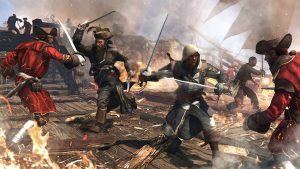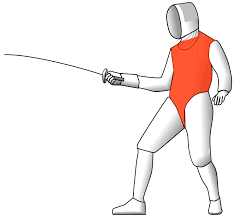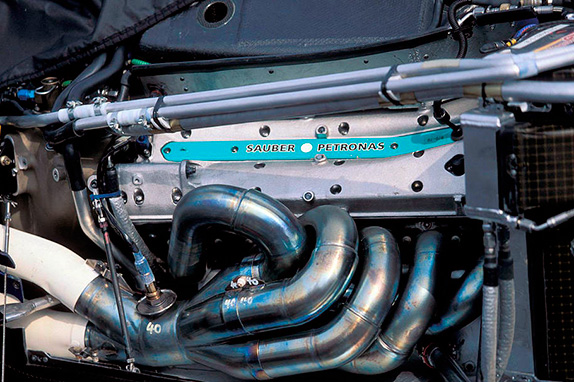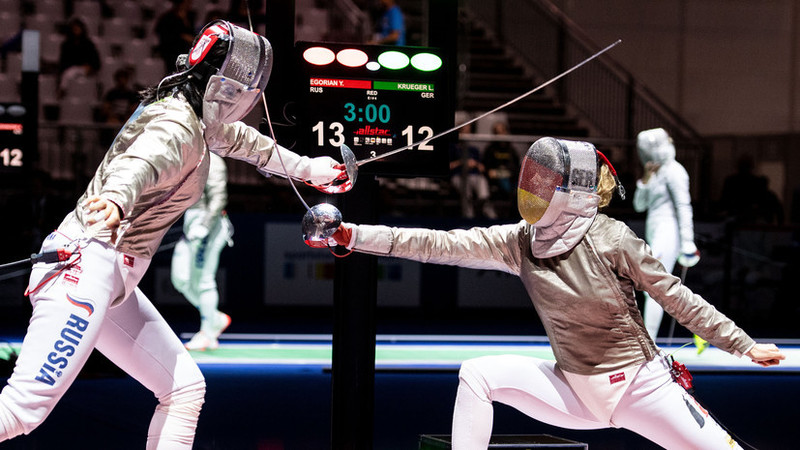HISTORY OF FENCING IN THE MIDDLE CENTURIES
 In the Middle Ages, the possession of knives was the privilege of chivalry. In the wars of that time, the battle was decided by a clash of cavalry. Sometimes the battle was replaced by martial arts of two representatives of hostile armies. Tacitus3 in the work “Germany” describes the struggle of two opponents, the outcome of which decided the victory of the armies.
In the Middle Ages, the possession of knives was the privilege of chivalry. In the wars of that time, the battle was decided by a clash of cavalry. Sometimes the battle was replaced by martial arts of two representatives of hostile armies. Tacitus3 in the work “Germany” describes the struggle of two opponents, the outcome of which decided the victory of the armies.
The religious savagery of the Middle Ages gave rise to another form of martial art – the “court of God.” It was a duel, which took place by order of the court, if one of the litigants disputed the justice of the verdict. The winner of the “court of God” was recognized as the winner of the court case.
Appearing for the first time in the Scandinavian countries, the “court of God” subsequently resulted in the form of duels that became widespread. The sword and sword as a weapon of attack were held in high esteem. Evidence of this is in the songs of the Scandinavian peoples. Information on the technique and methodology of training in the possession of cold weapons in the first half of the Middle Ages is extremely scarce. It is only known that one of the seven “noble passions” 4 that the knight was supposed to possess was fencing. Apparently, during this period a number of additional theatrical movements began to be introduced into fencing, since it was often a spectacle at knightly games.
Teaching fencing children of the knightly class began around the age of 10. In any case, by the age of 14, the boy should have owned weapons (Tacitus, “Germany”).
The use of heavy protective armor by knights caused the weighting and lengthening of weapons. The battle with such weapons, of course, made it almost impossible to use any more complicated equipment and tactics. The technique was reduced mainly to delivering a strong blow to damage the armor of the enemy, so as to defeat the second blow. Protection against such an impact was possible only in the form of evasion from the impact. Since it was not easy to act with a long, heavy sword, very often the weapons were thrown back and the battle turned into hand-to-hand combat.
In the X century. in France and England appeared, as sports and entertainment forms, knightly tournaments, which were then transferred to Germany. Tournaments existed until the end of the 16th century, i.e., about 600 years. They were carried out with both blunt and honed weapons and in most cases ended in human casualties. The main weapon at the tournaments was the club, which they tried to knock down the enemy from the horse. Then a sword was used, which sought to chop off the jewelry on the helmet, and, finally, a spear was used, which sought to knock the enemy out of the saddle.
In knightly tournaments the cult of brute force and dexterity of horse control dominated. The fencing technique was not necessary.
Closer to fencing was the technique of possessing the cold steel of the townspeople and the peasant militia of the feudal armies. Having no means to buy expensive armor, they practiced and fought with a two-handed sword or sword. The shield was used not only as a means of defense, but also for attack. The presence of the shield created the need for a fighting stance – with the left foot forward. The severity of the weapon often forced to resort to hand-to-hand combat with the enemy. The least wealthy fought on iron-bound sticks and halberds. It should be noted the first-time weapons protection techniques, the existence of which in ancient centuries there is no mention. Education of citizens was carried out in fencing schools (France, Germany). Initially, the task of the schools was to prepare citizens for the possession of knives in case a duel of a judicial or other order forces the townspeople to take up arms. Subsequently, fencing became one of the favorite entertainments among the members of the shops of the medieval city. The most successful and frequently speaking townspeople began to form independent guilds (workshops), making fencing their craft.
At the end of the XV century. and throughout the sixteenth century, fencing developed most widely in Spain. This was facilitated by the production of world-famous Toledo blades, the extremely widespread development of fights, and the emergence of a special “bravo” caste. The Spaniards replaced the heavy two-handed sword with a sword used for striking and for injections, and instead of a shield for defense they began to use a dagger or cloak. The Bravo also used the stylet, which is a long sword with a wide blade and a deep groove.
In 1474, the first printed work of the Spanish teachers Pons de Perpignan and Pedros de Torre appeared, outlining the basics of fencing technique and tactics. At first, the Spaniard’s sword remains only an offensive weapon, and a dagger or cloak, wrapped on his left hand, is a defensive one. Subsequently, the functions of the sword and dagger are distributed, more accurately. By that time (the second half of the 16th century), the external and internal fencing lines began to differ (Jacques Grassy1). The fighting stance continues to exist – with the left foot forward. The sword serves to attack and defend the inner, and the dagger – the outer line. At the end of the XVI century. Spanish master of fencing Carranzo introduces passes and volts into the fencing technique.




